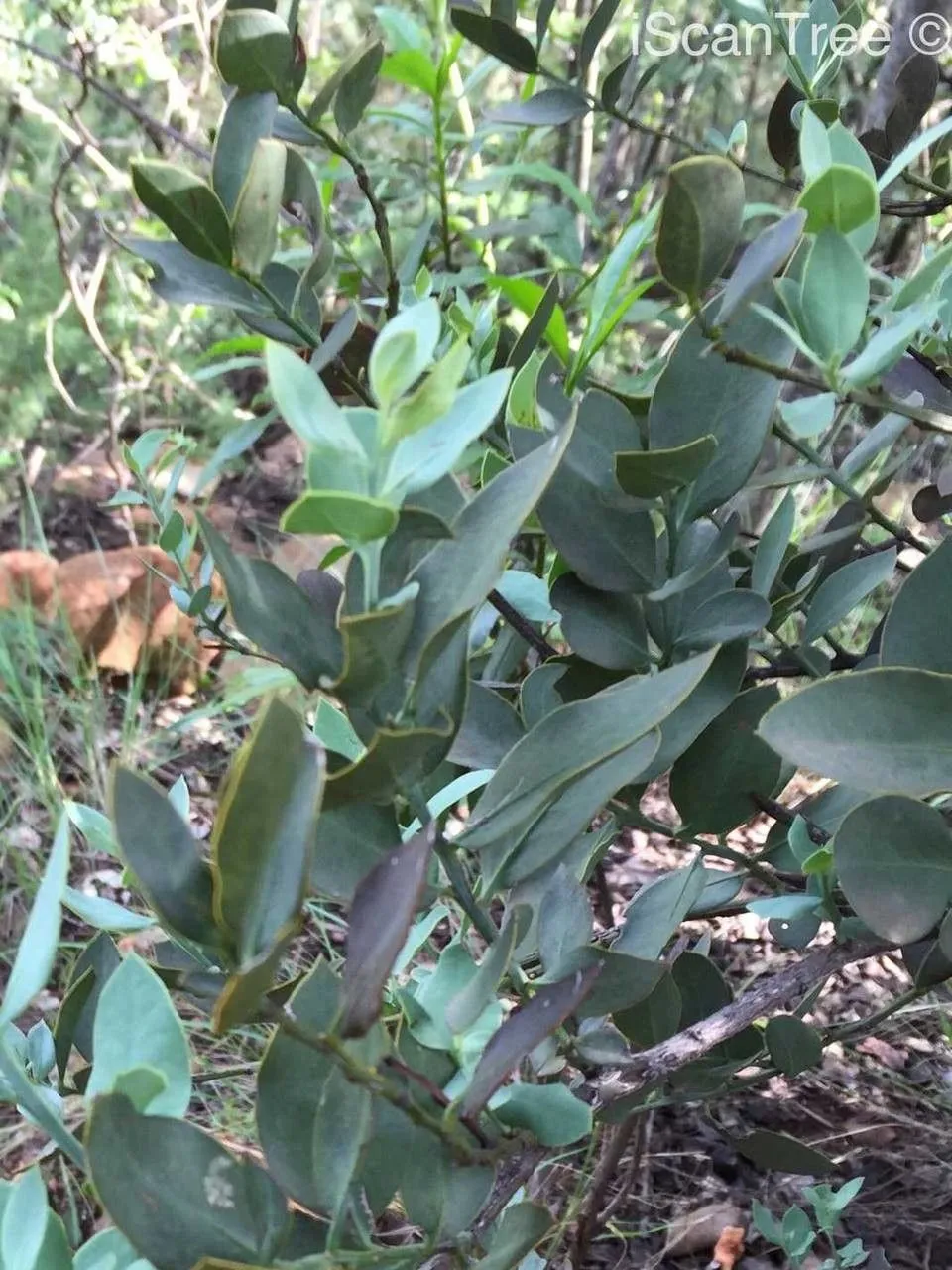
Author: Hochst. & Steud.
Bibliography: Exsicc. (Unio Itin.) 1832: s.n. (1832)
Year: 1832
Status: accepted
Rank: species
Genus: Osyris
Vegetable: False
Observations: Canary Is., S. Iberian Pen. Baleares, Sahara to S. Africa, Socotra, Indian Subcontinent to S. China and Indo-China
The Rock Tanninbush, known scientifically as Osyris lanceolata, is a remarkable plant species belonging to the Santalaceae family. Described by Hochst. & Steud. in the early 19th century, it holds a significant place in various ecosystems across the globe.
This hardy shrub can be found thriving in diverse regions, ranging from the Canary Islands and the southern Iberian Peninsula, including the Balearic Islands, extending through the vast stretches of the Sahara to South Africa. The Rock Tanninbush’s presence is notable in Socotra and extends further into the Indian Subcontinent, reaching as far as southern China and Indo-China. Such a wide distribution signifies its adaptability and ecological significance in different climatic conditions and terrains.
As a member of the Santalaceae family, Osyris lanceolata plays an essential role in the plant community, often involved in unique ecological interactions. Its ability to adapt to various environmental conditions showcases its resilience and evolutionary success.
The historical discovery and classification of this plant, recorded in 1832, emphasize the enduring interest and study of botanical sciences during that era. The research and observations noted from regions across its widespread range provide valuable insights into its botanical characteristics and ecological importance.
The Rock Tanninbush continues to be a subject of study for botanists and ecologists, contributing to a better understanding of plant biodiversity and conservation needs in the regions it inhabits.
En: Rock tanninbush
Af: Bergbas
Vi: Đàn hương Đông Phi
Taken Jul 30, 2019 by Jean-Luc de Ochandiano (cc-by-sa)
Taken May 14, 2006 by Pedro Gaspar (cc-by-sa)
Taken May 14, 2006 by Pedro Gaspar (cc-by-sa)
Taken Sep 9, 2021 by Annemarie Ahrens-Stehle (cc-by-sa)
Taken Mar 5, 2022 by Mateos Fernández Emilio (cc-by-sa)
Taken May 12, 2020 by Luis Olivé (cc-by-sa)
Taken Nov 4, 2021 by Beatriz Acabado (cc-by-sa)
Taken May 31, 2019 by Aceña Patricia (cc-by-sa)
Taken May 27, 2021 by George Mugambi (cc-by-sa)
Taken Sep 1, 2021 by Blázquez Benedicto (cc-by-sa)
Taken Mar 20, 2016 by Manie Maree (©)
Taken Mar 20, 2016 by Manie Maree (©)
Taken Mar 20, 2016 by Manie Maree (©)
Taken Mar 20, 2016 by Manie Maree (©)
Taken Jul 8, 2019 by QldAu Gullies (cc-by-sa)
Taken Feb 25, 2021 by susan brown (cc-by-sa)
Taken Jul 2, 2018 by susan brown (cc-by-sa)
Taken Aug 18, 2020 by Arturo Oradini (cc-by-sa)
Taken Aug 20, 2020 by Arturo Oradini (cc-by-sa)
Taken Mar 20, 2016 by Manie Maree (©)
Taken Mar 20, 2016 by Manie Maree (©)
Taken Mar 20, 2016 by Manie Maree (©)
Taken Mar 20, 2016 by Manie Maree (©)
Taken Mar 20, 2016 by Manie Maree (©)
Taken Mar 20, 2016 by Manie Maree (©)
Taken Jul 22, 2018 by susan brown (cc-by-sa)
Taken Jul 22, 2018 by susan brown (cc-by-sa)
Taken Nov 26, 2019 by susan brown (cc-by-sa)
Taken Jan 28, 2022 by Bernard SOULIER (cc-by-sa)
Taken Apr 12, 1999 by Tela Botanica − Liliane Roubaudi (cc-by-sa)
© copyright of the Board of Trustees of the Royal Botanic Gardens, Kew.
© copyright of the Board of Trustees of the Royal Botanic Gardens, Kew.
© copyright of the Board of Trustees of the Royal Botanic Gardens, Kew.
Family: Myrtaceae Author: (F.Muell.) K.D.Hill & L.A.S.Johnson Bibliography: Telopea 6: 402 (1995) Year: 1995 Status:…
Family: Rubiaceae Author: Pierre ex A.Froehner Bibliography: Notizbl. Bot. Gart. Berlin-Dahlem 1: 237 (1897) Year:…
Family: Sapindaceae Author: Koidz. Bibliography: J. Coll. Sci. Imp. Univ. Tokyo 32(1): 38 (1911) Year:…
Family: Asteraceae Author: A.Gray Bibliography: Pacif. Railr. Rep.: 107 (1857) Year: 1857 Status: accepted Rank:…
Family: Fabaceae Author: Medik. Bibliography: Vorles. Churpfälz. Phys.-Ökon. Ges. 2: 398 (1787) Year: 1787 Status:…
Family: Aspleniaceae Author: (Cav.) Alston Bibliography: Bull. Misc. Inform. Kew 1932: 309 (1932) Year: 1932…